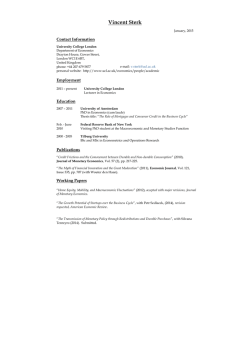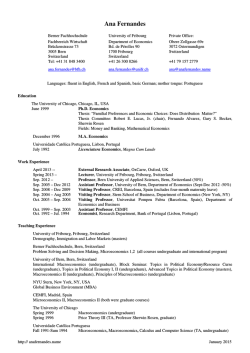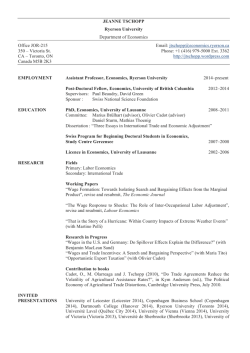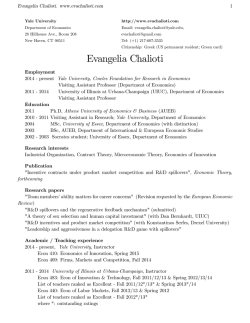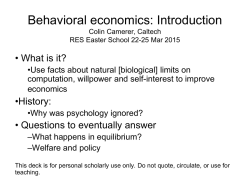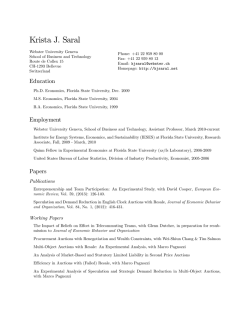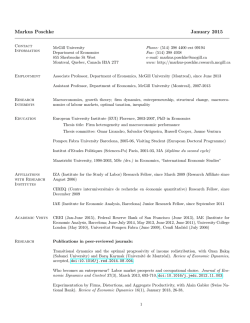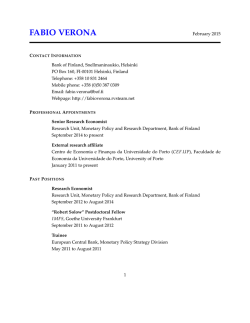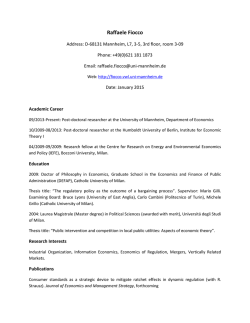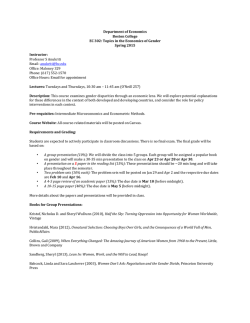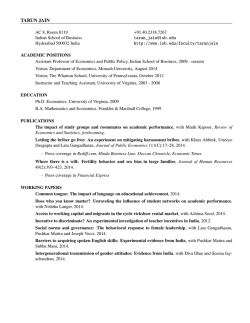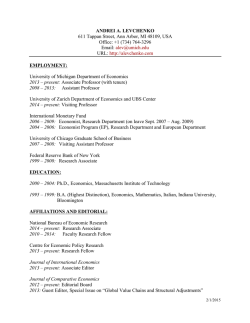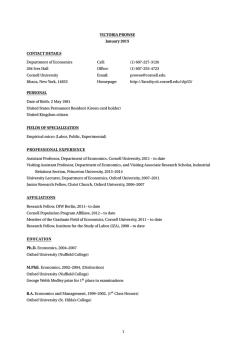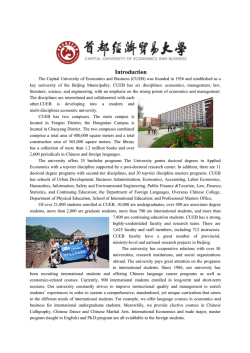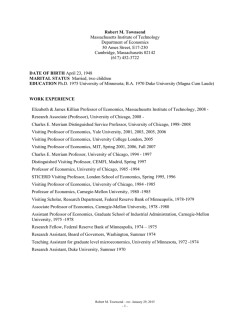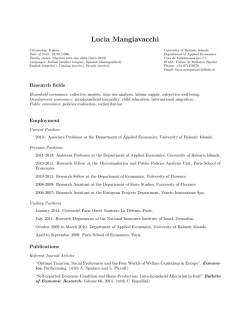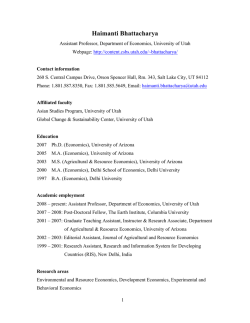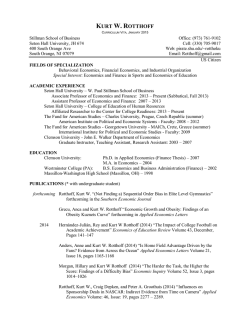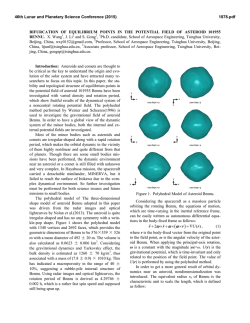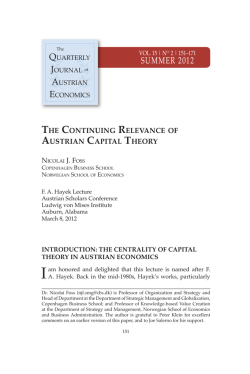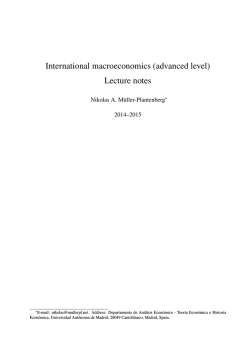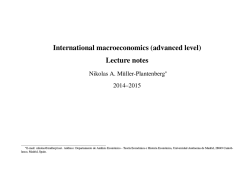
LECTURE NOTES - Punto de Vista Economico
METROPOLITAN STATE UNIVERSITY OF DENVER
INTERMEDIATE MACROECONOMICS
LECTURE NOTES
Chapter 3: Classical Macroeconomics: Output and Employment
1. The starting point
The Keynesian revolution was against “classical economics” (orthodox economics)
Keynes refer to all economists before 1936 as classical economics
This is wrong:
o
Classical economics: Economic theory (price theory) between Adam Smith’s Wealth of Nations
(1776) and the marginal revolution in 1980s (C. Menger, L. Walras, and S. Jevons.) John Stuart
Mill (Principles of Political Economy -1848) was the last classic economist
o
Neoclassical economics refer to similar political economy after the marginal revolution, not to
similar (price) theory
o
Classical price theory (costs define prices in the long run) is different from neoclassical
Classic economics: Costs define prices in the long-run
Neoclassical economics: Costs and utility define prices
Austrians: Utility (final prices) define costs of production (the opposite to Classical price
theory)
Classical macroeconomics:
o
Output is always at full employment (equilibrium) level
o
Only full-employment points could be positions of even short-run equilibrium
o
There is perfect information
Classical economics
o
Output is not always at full employment (equilibrium) level
o
There can be no full-employment in the short-run
o
There is no perfect information
To criticize classical macroeconomics is not the same than to criticize classical economics
Page 1 of 5
METROPOLITAN STATE UNIVERSITY OF DENVER
INTERMEDIATE MACROECONOMICS
2. The Classical Revolution
Classical economics was a reaction against mercantilism
o
The idea that wealth is in the stock of money (precious metals) and not in how much can be
consumed
o
The idea that the state needs to impose regulation so that exports have to more than imports so
the country accumulates increasing stocks of precious metals
Economics started as an explanation of why the economies of different kingdoms were not doing well
Classical economics
o
It is real factors what determines the level of wealth
o
A free economy is required for an efficient use of the real factors
o
Money is a facilitator for trade by avoiding the problem of “double coincidence of wants”,
it is a unit of account, not wealth per se
Page 2 of 5
METROPOLITAN STATE UNIVERSITY OF DENVER
INTERMEDIATE MACROECONOMICS
3. Production
Aggregate production function
(̅
o
)
(
o
)
o
̅
o
Hicks neutral:
(
o
Labor-augmenting:
(
o
Capital-augmenting:
(
)
)
(
)
Three sections
st
o
1 : Increasing or constant returns to scale,
o
2 : Diminishing returns,
o
3 : Negative returns,
nd
rd
o
(
o
(
)
)
Returns to scale
o
(
)
(
)
o
(DRS)
o
(CRS)
o
)
(IRS)
Some production functions
o
Linear:
o
Leontieff:
o
Cobb-Douglas:
o
CES (Constant Elasticity of Substitution):
{
}
(
)
(
)
o
o
o
Page 3 of 5
METROPOLITAN STATE UNIVERSITY OF DENVER
INTERMEDIATE MACROECONOMICS
4. Employment
Assumptions
o
Firms and individuals optimize efficiently
o
There is perfect information and no barriers to price adjustment
o
Therefore the market clears (is in equilibrium)
Labor demand
o
Firms are perfect competitors
o
Short-run analysis: Output can only change by changing employment
o
Firm maximizes profits ( ) when marginal revenue (MR) equals marginal cost (MC)
( (̅
o
̅
))
o
,
(
o
Then:
(
)
o
The firm will hire N units of labor until
o
Because
o
Because
)
labor demand has a negative slope
( )
Labor supply
o
Individuals maximize utility (U)
o
Utility has two component, consumption (C) and leisure (L)
o
Time is limited to 24hs per day, therefore there is trade-off between C and L
(
o
)
o
There is an indifference curve with C and L. At each point
o
Therefore, a change in
produces analogous income and substitution effects to consumption of
two goods (review your microeconomic notes)
If
increases, then C increases because (1) higher real wage per hour and (2) more
hours of work. Then hours of leisure decrease and
If
also increases
Substitution effect > income effect
is high enough, then hours of work may decline to have more hours for leisure
until
o
Substitution effect < income effect
Intuition:
is so-high that
is smaller than
.
( ) we assume a positive slope for the whole curve (unless specified otherwise)
Page 4 of 5
METROPOLITAN STATE UNIVERSITY OF DENVER
INTERMEDIATE MACROECONOMICS
5. Equilibrium Output and Employment
Three functions
o
(̅
o
( )
o
( )
)
There exists (subject to “mathematical conditions”) a ( ) such that
Therefore, equilibrium output is
Assume two periods (
Shock: P doubles:
st
(̅
)
)
o
1 :
o
2 : quantity of labor supplied declines
o
3 :
o
4 : MR > MC
o
5 :
o
6 : w increases until ( )
o
All this occurs simultaneously
declines
nd
rd
declines
th
th
increases (by all firms)
th
( )
Shock: Assume an increase in K or A
st
o
1 : Output increases
o
2 : MR > MC
o
3 :
o
4 :
o
5 : New equilibrium: more output, higher real wages, and lower P
o
All this occurs simultaneously
nd
rd
th
for all firms increase (by all firms)
increases
th
Shock: Assume an increase in
st
o
1 : Output increases
o
2 : MPN decreases
o
3 :
o
4 :
o
th
5 : New equilibrium: more output, lower real wages, and lower P
o
All this occurs simultaneously
nd
rd
decreases
th
decreases more than w.
To see who P is determined see next chapter
Page 5 of 5
© Copyright 2024
